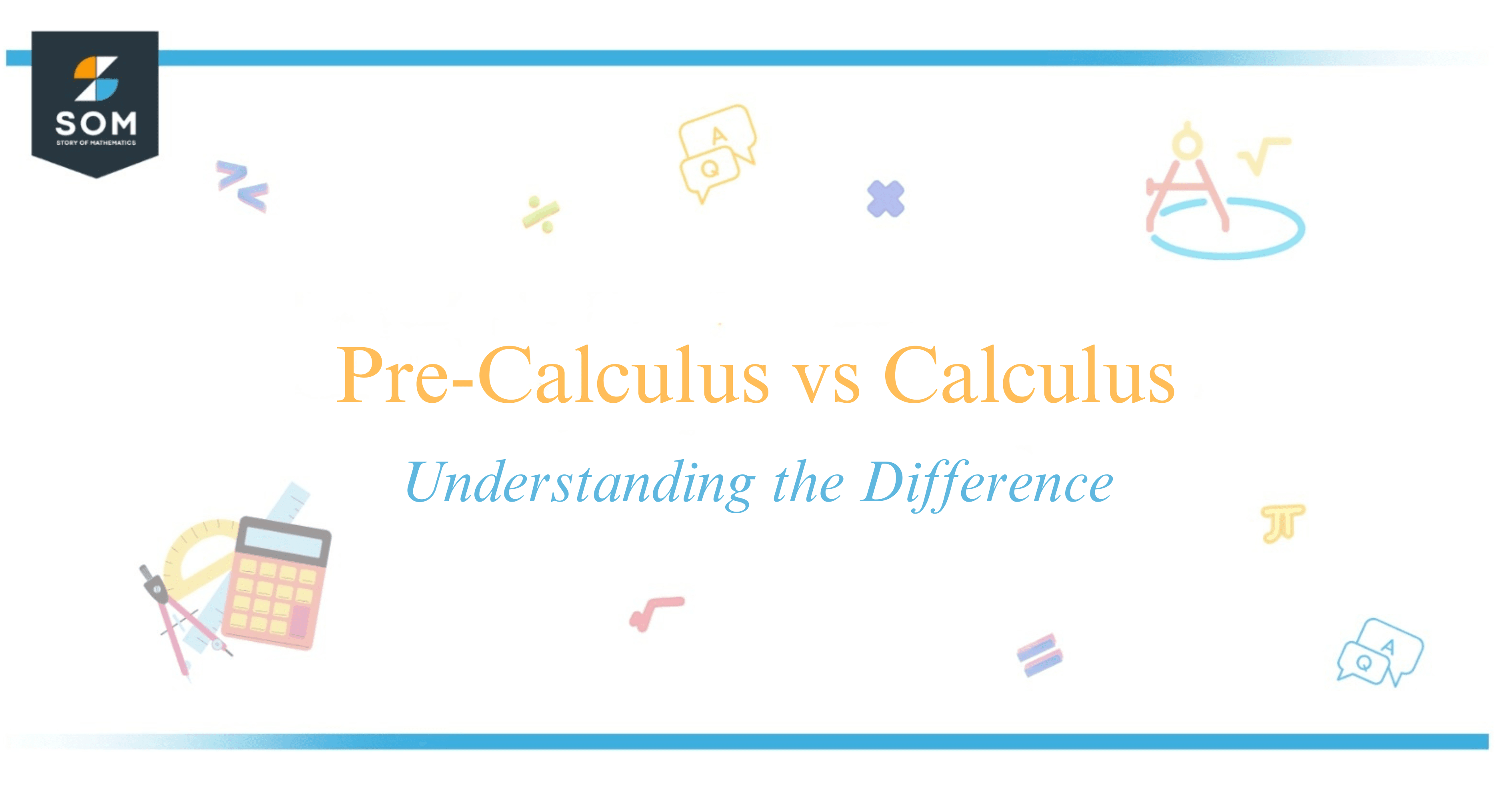
The pre–calculus and calculus form the cornerstone of higher mathematics, each serving as crucial stepping stones in understanding the language of change and motion.
Pre–calculus lays the groundwork with concepts such as functions, slopes, and trigonometry, preparing students for the more complex world of calculus, where the focus shifts to derivatives, integrals, and infinitesimal.
I find this journey fascinating, as it evolves from mastering how to describe quantities and their changes algebraically to applying this knowledge to compute rates of change and areas under curves—tools that are essential in many scientific fields. Stick around, and you might just discover the beauty and utility that lies in the transition from pre–calculus to calculus.
Main Differences Between Pre-Calculus and Calculus
The main differences between Pre-Calculus and Calculus lie in the focus of study; Pre-Calculus prepares students with foundational concepts, while Calculus deals with the mathematics of change.
Pre-Calculus primarily reinforces high school mathematics, covering advanced algebra, geometry, trigonometry, and functions. It sets the stage for Calculus by introducing:
- Polynomial, rational, trigonometric, exponential, and logarithmic functions.
- Inequalities and complex numbers.
- Conic sections and systems of equations.
Students solidify their problem-solving and analytical thinking skills, which are crucial for understanding more complex concepts in Calculus.
Calculus, however, introduces new tools to measure change. Some key concepts include:
- Limits: Understanding the behavior of functions as ( x ) approaches a particular point.
- Derivatives: Measures rates of change; mathematically, if ( f(x) ) is a function, its derivative ( f'(x) ) represents the slope of the tangent line at a point on the curve.
- Integrals: Focus on the accumulation of quantities, such as the area under a curve, expressed as $\int f(x) ,dx$.
Calculus is typically divided into two courses: Calculus I and Calculus II. Calculus I covers:
- Differential Calculus: Concerned with instantaneous rates of change and slopes of curves.
- Beginning Integral Calculus: Pertains to the accumulation of quantities, like area and volume.
Calculus 2 often expands on these topics with more complex integration techniques, sequences, and series. Students learn to apply Calculus in real-world contexts, evolving their basic math lessons to a higher level.
Applications and Utility in Real Life
Pre-calculus serves as a cornerstone in preparing me for the challenges of calculus, which broadly encompasses AP Calculus AB and AP Calculus BC courses. In pre-calculus, I learn to handle logarithms, exponents, and trigonometric functions which are crucial for calculus concepts such as differentiation and integration.
When it comes to calculus, the real-world applications are extensive. As an engineer or anyone involved in the STEM field, I frequently use calculus to solve complex problems. For example, I might use calculus to determine the rate of change ($\frac{dy}{dx}$) in contexts like measuring velocity and acceleration in physics. Calculus algorithms help me optimize systems and design components in engineering projects.
Graphing calculators have become an indispensable tool for me, especially in AP Calculus classes, to visualize functions and understand their properties like limits and continuity. These technologies enable me to apply advanced calculus concepts to real-world problems more efficiently.
Here’s a quick look at how both pre-calculus and calculus tie into various real-life applications:
| Concept | Application in Real Life |
|---|---|
| Pre-calculus | Planning and optimization problems in business |
| Calculus | Assessing rates of change in physics and engineering |
For those of us looking forward to a career in fields like economics, environmental science, or even architecture, a strong foundation in these subjects is vital. Calculus allows me to model and simulate real-world phenomena, thus providing a quantitative basis for innovations and practical solutions to everyday challenges.
Conclusion
In my exploration of the transition from pre-calculus to calculus, I’ve highlighted their distinct roles in the mathematics curriculum. Pre-calculus equips students with foundational concepts such as algebraic manipulation, trigonometric functions, and an understanding of exponential and logarithmic functions.
Calculus, on the other hand, unfolds as a new chapter where students engage with the concepts of limits, derivatives, and integrals. These topics allow for the examination of change and motion in a variety of contexts, fundamentally expanding mathematical understanding.
I find the progression from pre-calculus to calculus to be a logical and necessary step in mathematics education. Mastery in pre-calculus sets the stage for the challenges and revelations found in calculus. This understanding is not just academic; it underpins numerous applications in science, engineering, and beyond.
For those embarking on this educational journey, embrace the pre-calculus foundation for the critical role it plays. Once in calculus, the focus shifts to applying these tools to analyze real-world phenomena methodically. It’s a rewarding transition that builds on past knowledge while pushing toward new horizons in mathematics and its applications.
